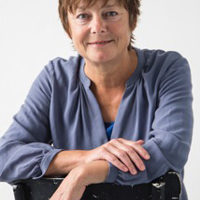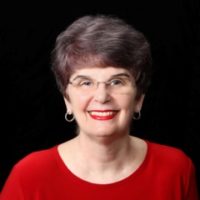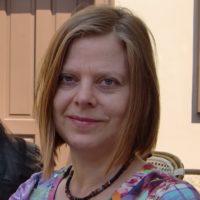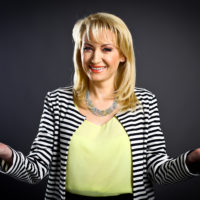Poet and philosopher David Whyte is one of the teachers and guides whose writing and speaking awakens greater depth in my own work. Recently, this quote landed in my inbox:
The only choice we have as we mature
is how we inhabit our vulnerability,
how we become larger and more courageous
and more compassionate
through our intimacy with disappearance.
These words speak to me in two ways. First, as I ease into my sage years, they beautifully articulate my own current unfolding journey. I have begun mentoring others to lead the Transformational Presence work and carry this way of living, leading, and serving further out into the world. I’ve become aware that there is both an inner and outer process as I gently yet intentionally give space to others to steward this work in the world. It’s about supporting them to grow into their greatest potential through the gifts they are here to share. It’s about much more than just how to realize their visions and make their contribution – it’s about refining their art of Transformational Presence in leadership, coaching, and service. While I’m not yet ready to “disappear,” I am becoming more intimate with that eventual reality.
However, it is the second way that these wise words of David Whyte speak to me that I feel called to write about today. When I first read these few lines, my first thought was how much this same idea applies to conscious leadership. With only a slight change in the first line, his words offer a profound invitation:
An important choice we have as leaders
is how we inhabit our vulnerability,
how we become larger and more courageous
and more compassionate
through our intimacy with disappearance.
In the mainstream conversation, we have perhaps long thought that having a large presence and a good amount of courage were important, if not essential, for influential and effective leadership. However, words like vulnerability, compassion, intimacy, and disappearance have not often been a part of that conversation.
As I keep reading these lines over and over again, the unspoken word that I sense is “transparent” – transparent in what is important to us, and the ethical and integrity considerations that color our choices and decisions. It’s about being true to who we are and what we stand for, and not hiding that. It means letting our hearts have an active voice in the conversation.
As the conscious leadership movement is becoming more widely recognized, the words vulnerability and compassion are, in fact, beginning to come into the conversation. Yet with the words intimacy with our disappearance, David Whyte invites an even deeper awareness and exploration. I admit that this concept both rattles my system and feels deeply welcome.
In my new book, Transformational Presence: How To Make a Difference In a Rapidly Changing World, I write about an emerging fourth level of leadership development. The first three levels describe the conventional development path: 1) Choose a leader to follow; 2) Become a leader of your own life; and 3) Become a leader for others.
However, a fourth level is beginning to show up on the periphery of leadership consciousness. This fourth level invites us to recognize that the emerging potential – or “what wants to happen,” as we often say in Transformational Presence – is actually the real leader. The emerging potential will show us the way forward if we pay attention. Therefore, the response-ability of the person with the “leader” title is to listen, sense, and feel what is emerging – to sense what wants to happen in service of something bigger – and then translate that message to the people he or she serves. Leadership becomes fully about stewardship.
“Stewarding potential” is not the same thing as “making something happen.” Stewarding potential means that the potential is the leader, and that you take your cues from it, not the other way around. The potential tells you what it needs and shows you your next steps. Your job is to listen and respond. This is the new paradigm of conscious leadership – the fourth level of leadership development.
When you are big enough, courageous enough, and vulnerable enough to follow the potential and be its steward, the potential is likely to stretch you – to challenge you to grow, and to call you forth to new levels of engagement and commitment. It will probably ask you to be more visible and put yourself on the line in ways you haven’t done before. It may ask you to make sacrifices, and to be the torchbearer for the project or initiative. In the biggest sense, stewarding a particular potential might even become your life’s work.
Yet there will inevitably come the moment when it is time to step aside or shift your role. The potential lets you know that something else is needed. And that something else may include someone else.
Or the potential may tell you that it’s ready to fly on its own now – that it’s time for you to let go of the steering wheel. Maybe that letting go is for a day or a week or a month; maybe it’s forever.
It’s all part of a natural cycle. There is an arc of energy through everything. Everything in life and leadership has its own natural rhythm and flow. Being aware of the arcs, the cycles, the rhythms and flows, are important capacities for conscious leadership in today’s world.
And so we come back to David Whyte’s invitation. The more we can inhabit our vulnerability, nurture our own authentically large personal presence, be courageous to live what matters to us, be compassionate with the twists and turns of life and work, and become intimate with the idea of our own disappearance, the more conscious our leadership becomes. And the greater difference we are likely to make.
~ ~ ~
If you enjoyed this blog post and found it helpful or inspiring, please share it with your friends on social media by clicking on the icons below. You are also welcome to make a comment below.
You may subscribe to our free weekly newsletter by clicking here.
Related Blog Posts:
- An Emerging New Level of Leadership Development
- Consciously Choosing What We Create and What We Allow To Die
- Faithfully Letting Go – Finding the Path From What Has Been To What Could Be





































